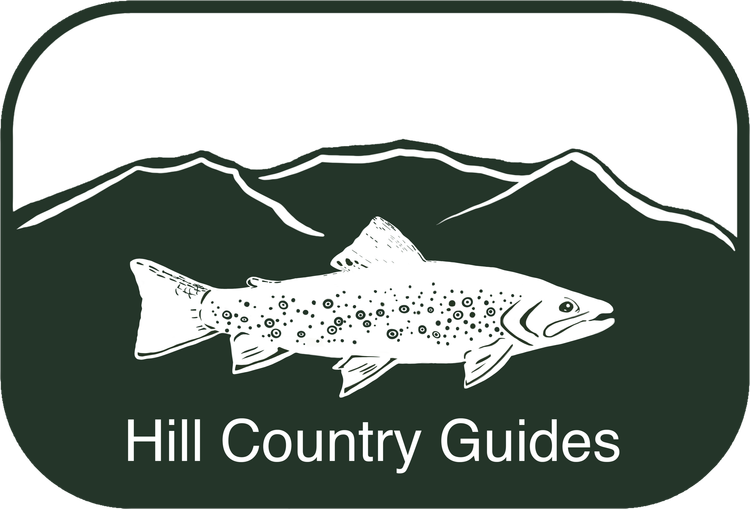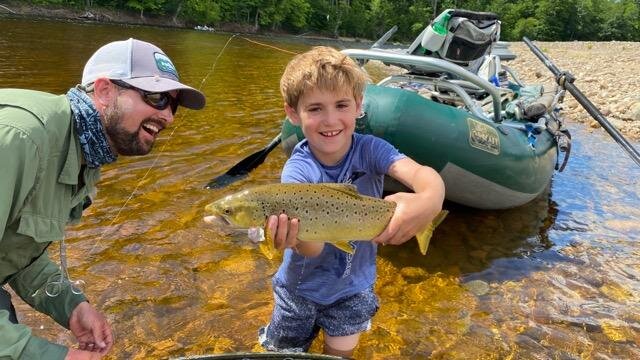Ask most anglers if they would rather fly fish in March or May and the unanimous answer is May. Afterall May is when Mayflies hatch, right? On some years early May in the mountains is prime for post-snowmelt fishing. On other years rivers are still choked with snowmelt in early May. March on the other hand often means warming water before the big snowmelt kicks in. This pre-snowmelt bite can be a great time to target the biggest fish in the river that take advantage of the first bump in water temps after a cold winter.
Here in the Northeast dates vary as to when snowmelt starts and ends. Beginning as early as mid-March it can sometimes start in late April and go into late May. The pre-snowmelt bite usually starts a few weeks to a month before snowmelt. What follows are some tips about how to hit and fish this bite window that falls somewhere between the bitter cold of winter and the mud choked streams of spring runoff.
Warming before the melt
While it is true that trout can be caught at almost any water temperature they are most likely to feed as water temperatures climb. It doesn’t take much of a temperature bump to motivate winter trout to perk up for a meal. In my experience any increase in water temperature can produce a bite window. On some tailwaters like the White River in Arkansas winter water temps stay in the 50’s F. For a northern freestone stream to reach 38 degrees in late winter it takes sun and moderating air temperatures. Sunlight is far more important for water to warm than air temperature. While a 50 degree air temp will warm water at 50 watts/m2 sunlight alone will warm water at 1366watts/m2. Luckily sunlight alone does not melt snow. If you can follow this theory, weather that is good for maple sap gathering is good for fishing. Night time lows below freezing followed by daytime highs in the 40’s. This allows water temps to rise without a warm enough air temp to melt too much snow. If you can combine this scenario with a low-pressure system arriving in the afternoon you have a “best case” scenario for pre-snowmelt fishing. Conversely if it gets too warm snow melt will overtake the warming effect and shut off the bite completely. It should be understood that bumps in water temp typically start mid-morning and go through the afternoon in March and April. It is imperative to understand that you might not get a bite window early in the day, typically 10am to 6pm is when water temps will be at their warmest.
Expect Slow fishing
In our neck of the woods, even during “good” pre-snowmelt bites the fishing is by no means fast and furious. On more productive days you might get four or five chances at fish. My friends and I consider any day with multiple fish landed to be great and any day with at least one good fish landed worthwhile. Over the years I have noticed that bite windows come and go throughout the day and most “windows” only mean one or two chances at fish. There is often a bite right as water temps start to climb around 10 or 11 am, another when water temps hit their peak at around 2 pm and a bite anytime the sun falls behind trees or is covered by clouds. As stated earlier the best fishing days are often those coupled with a low pressure system arriving after water temps have warmed under a bright sun.
Have a few confidence flies
In May and June when bug activity is high it is common to rotate through a variety of nymphs dries and streamers to stay on fish. Conversely, the early spring bite is slower but more predictable. Aside from an occasional early dark stonefly or midge hatch, fish are going to eat the same stuff nearly every day that is fishable. A box of sculpins, buggers, crayfish, and juvenile trout patterns will often do the trick for streamers. A box of stones, worms, eggs, prince nymphs, and pheasant tails will cover your nymphing needs. While I don’t typically think of dry fly-fishing during pre-snowmelt some rivers have midge and stonefly hatches that get fish to look up, so if you want, throw a few Griffiths gnats and dark stonefly dries in the mix.
Fish deep and stay in the strike zone
I tend to fish heavier streamers this time of the year. The reason for this is two-fold, first I want my flies to get down quickly to where most winter trout live and I want my flies to move slowly and stay in the strike zone.
Match the streamer hatch
While big flies can take fish during this time of the year I have done just as well with medium sized streamers in the 2” to 5” range. The key here is to simply match your fly size to the size of forage fish around. In a river like the Saco that is full of a variety of dace and sculpin I fish 2-5” sculpin and dace patterns. For color pay attention to the water color, color of the river bottom and sunlight. Nine times out of ten your bait fish will match the lighting and river bottom to stay camouflaged. For sandy bottom rivers I tend to fish tan and brown streamers. If it is bright out I go lighter in color and if it is dark I go darker. When lighting and river bottom seem to vary, I like to fish neutral colors like olive that can work in a variety of light and water clarities.
Find the warmest water
You know those shaded places with fast water where you can catch fish even on a bright summer day? That isn’t where you want to fish pre-snowmelt! Focus on slow deep runs and pools. Sometimes places where you can only catch warmwater fish in the summer are the best places for winter trout fishing. Everyone knows big trout like banks but they also like mid-river structure, drop offs and inside seems. Mid-depth and mid speed water with a variety of structure is a good bet of where the most active fish in the river will hold. With open water warming the fastest big trout even cruise open sandy flats.
Cover water or dissect a prime lie
If I can I like to float long stretches of water during pre-snowmelt. this allows me to cover as much winter holding water as possible. If I can cover a new fish during each bite window I’ll get multiple shots at different alpha trout. If I don’t have time to float I will choose a high probability pool and fish it during the best few hour of the day, covering every inch from top to bottom.
Gear:
I typically carry two different rods for early season fishing. I pack a 10 foot 4 or 5 weight rod like an Orvis 10ft 4-5wt H3F or Thomas and Thomas Contact or Zone 10ft 4 wt, as well as a 6 or 7 weight streamer rod such as an Orvis Helios 3D or Thomas and Thomas Exocett SS 200 or 250. If I’m floating I will load this streamer rod with a 200 or 250 grain full sink streamer line such as Airflows streamer max or Orvis Depth Charge. If I am wading I will fish a type IV 10 to 15ft sink tip with a 9ft leader of 10lb to 15 lb fluorocarbon to a small spro swivel to 10 to 8lb fluorocarbon. I especially like Cortland top secret fluorocarbon tippet for euro style jigging as it has a high strength to diameter ratio. At 9.2 lb test the 3X can handle almost any trout you will encounter.





























